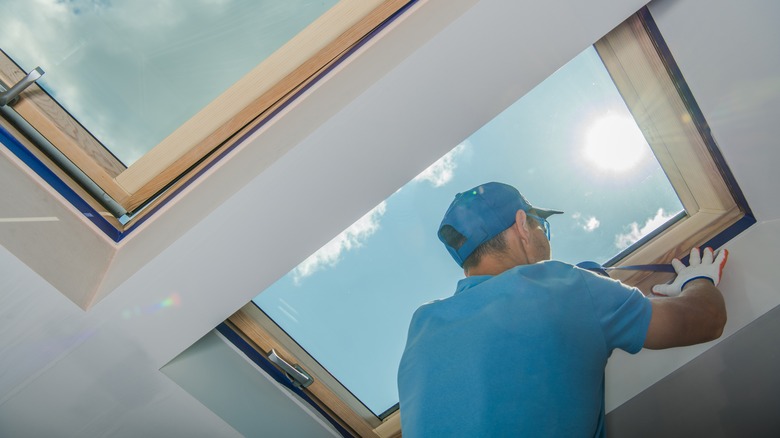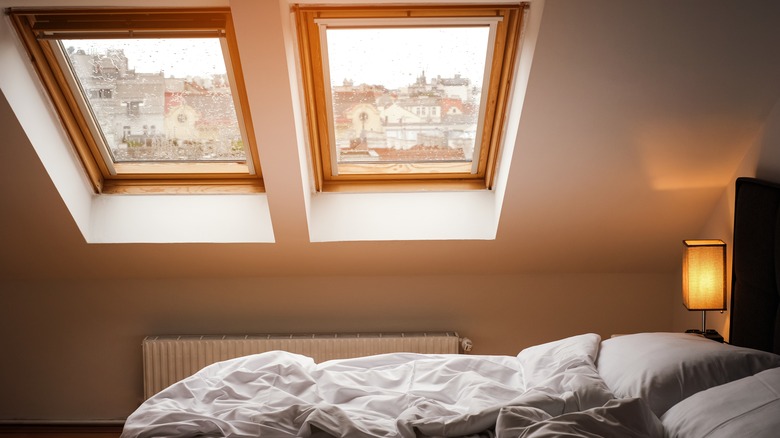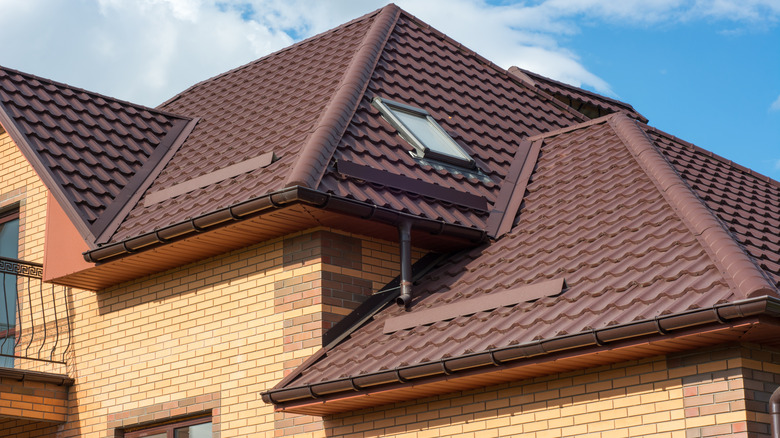Is A Skylight Right For Your Home?
We may receive a commission on purchases made from links.
In theory, installing a skylight is a great way to upgrade your house by increasing natural light, stabilizing temperatures with solar heat, and improving the home's ambiance. A skylight can even help cool the premises so you don't have to rely on an air conditioner. Best of all, you can enjoy these benefits while saving money and doing your part for the environment. Flynn Roofing Co. asserts that skylights can slash heating costs when it's cold, then turn around and reduce electric bills during the summer months, too. A small, dark, and airless space can be revitalized and appear larger by having a skylight, which will benefit everyone's mood and could make your home look more attractive when it comes time to sell later. Also consider the link between deficiencies in vitamin D and insufficient absorption of sunlight. Having a skylight may help you achieve appropriate levels of both D and B12 vitamins.
In spite of the obvious benefits, there are some factors that may make one question whether installing a skylight is the right move. Of course, cost is a primary consideration. Per Forbes, the average installation cost is $1,750, but can exceed $2,500. Shape, size, style, and the way a skylight is framed influence the price, as well as the manufacturer. A skylight's average life span can be anywhere from 8 years to twice that length, and that may make the installation cost worth it. However, there's more to this decision than money.
Deciding whether a skylight is right for you
The jury is still out as to whether a skylight increases a home's equity. Though it is an improvement akin to replacing the roof or upgrading the gutters, its cash value will ultimately be subject to market conditions. Skylights are basically compatible with most house styles, although they may clash with the look of an older home. Perhaps the emphasis, therefore, should be on adding to the quality of your life by installing a skylight rather than concentrating on its potential monetary value.
As is the case with other home improvement projects, skimping on quality or faulty installation will breed negative results. You may find that particularly large skylights draw in too much light or heat, or allow wanted heat to escape. Leaks are a constant concern as well. In fact, Skylight Specialists, Inc. offers the tongue-in-cheek warning that, while you might have a skylight that's not leaking right now, eventually it will. On a serious note, you'll need to decide between two types of skylights: those that are mounted with a box structure, or those without. And you'll have your choice of glass or plastic windows. According to Home Depot, a plastic skylight is strong and cost-effective, but can discolor and fail to block UV rays. On the other hand, hail or flying debris can shatter a glass pane. In the past, a too-flat or too-steep roof were barriers to installing a skylight; modern methods have since addressed those issues (via House Logic).
More pros and cons to skylights
Rain is your friend for cleaning your skylight, so a basic maintenance routine is all that's needed to keep it shipshape, and soap and water generally suffice. Seaway News recommends conducting an annual inspection when you give your entire roof the once over. Bear in mind that cleaning the outside of a skylight will require a trip to the roof.
Davis Roofing advises installing a skylight above an attic to regulate that room's typical heat build-up. Note that installation costs will escalate if skylights are added to anything but asphalt shingles. A sunroom or an indoor pool area are other suggestions. A skylight in the bathroom allows for privacy and superior ventilation, while fighting mold and mildew in the process. On the minus side, a skylight can be problematic in a bedroom or TV room, where it can result in too much light.
If the thought of an intruder rappelling down through a window on the roof keeps you up at night, Sterlingbuild allays that concern, noting that a skylight is the same as all the other windows on your house. Just in case, they suggest having laminated glass, reinforced construction, and a lock. Also, keep it closed when leaving the house. Before deciding one way or the other, make sure installing a skylight does not negate your home insurance policy's roof coverage or raise your premium. On the positive side, Home Light reports that one may qualify for federal tax credit by installing certain skylights.


